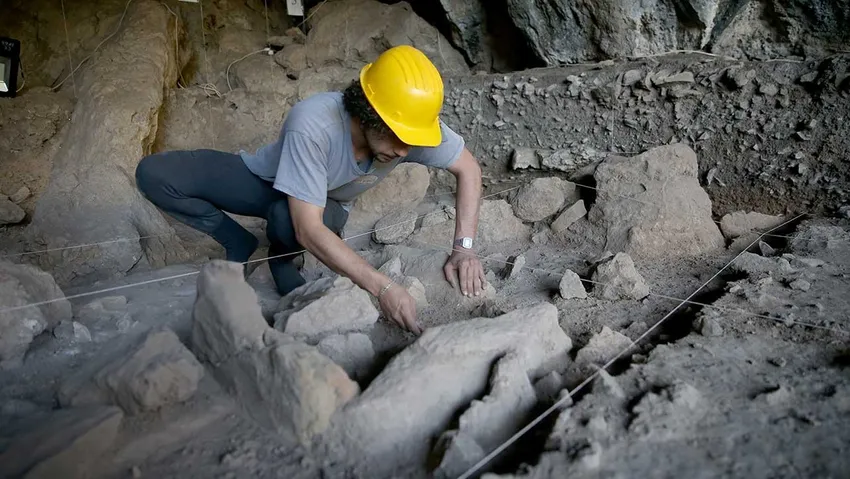
The discovery of a 12,000-year-old tomb in the Direkli Cave in Maraş
In the Direkli Cave in Kahramanmaraş, it is estimated that the third tomb reached in excavations that have been ongoing since 2007 is 12,000 years old.
Direkli Cave is located within the boundaries of Döngel village, approximately 38 km northwest of Kahramanmaraş province.
The traces of settlement in Direkli Cave were first identified by K. Kökten in 1958.
Following the discovery, a trial excavation was conducted in 1959. The data obtained during the research determined a 3×4 m area near the cave’s entrance.
The excavations that began in 2007 have been led by Associate Professor Merih Erek from the Department of Archaeology at Ankara Hacı Bayram Veli University.
Associate Professor Cevdet Merih Erek told an Anadolu Agency (AA) correspondent that the work being carried out in the cave located in the rural area of Döngel Neighborhood, connected to the Onikişubat district, has been conducted with a smaller team this year following the earthquakes centered in Maraş on February 6th.
Erek, stating that they have reached the third tomb in the excavations conducted in the region since 2007, recalled that they found the first tomb in 2009, the second one with a skeleton inside in 2019, and the last tomb in the 2023 excavation season.
He mentioned that only one of the tombs contained a skeleton, while the others were found empty. Erek explained:
“This year, we will complete our work with the excavations we conducted in the northern grid squares. In our excavations, we follow the planimetric excavation method, where each square is excavated 3 centimeters in the horizontal plane. Everything that is uncovered is left in its place, and its coordinates are recorded in the X, Y, and Z dimensions to create drawings. All findings are left in their original positions and, through various computer programs, are transformed into a digital record within the coordinate system. We believe that one of the three tombs we identified in Direkli Cave dates back to approximately 8,801 years, and the one at the bottom falls within the range of 12,100 to 12,200 years. The most recently discovered tomb is around 12,000 years old. In terms of cultural periods, we are reaching the history of people who lived in a time period referred to as the Epipaleolithic, where they were described as the last hunter-gatherers, although it wasn’t necessarily the case. During this period, there was no village life yet, and the inhabitants of Direkli Cave came here seasonally, settling every year to sustain their lives.”
Erek mentioned that the tombs they found were constructed with stones forming right angles or 90-degree angles. He added, “We don’t know whether the people living at that time had a tribe name or lived under a specific identity, which is why we simply refer to them as hunter-gatherers. The Epipaleolithic is the last period of people who led a nomadic way of life; later on, they began to construct buildings on plains and hills to establish village settlements. Direkli Cave is one of the points in Kahramanmaraş that completes the chronological history of human civilization from old to new.”
You may also like
- A 1700-year-old statue of Pan unearthed during the excavations at Polyeuktos in İstanbul
- The granary was found in the ancient city of Sebaste, founded by the first Roman emperor Augustus
- Donalar Kale Kapı Rock Tomb or Donalar Rock Tomb
- Theater emerges as works continue in ancient city of Perinthos
- Urartian King Argishti’s bronze shield revealed the name of an unknown country
- The religious center of Lycia, the ancient city of Letoon
- Who were the Luwians?
- A new study brings a fresh perspective on the Anatolian origin of the Indo-European languages
- Perhaps the oldest thermal treatment center in the world, which has been in continuous use for 2000 years -Basilica Therma Roman Bath or King’s Daughter-
- The largest synagogue of the ancient world, located in the ancient city of Sardis, is being restored













Leave a Reply